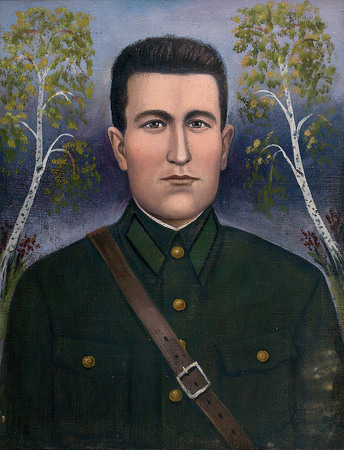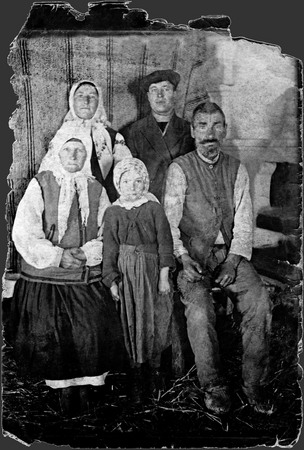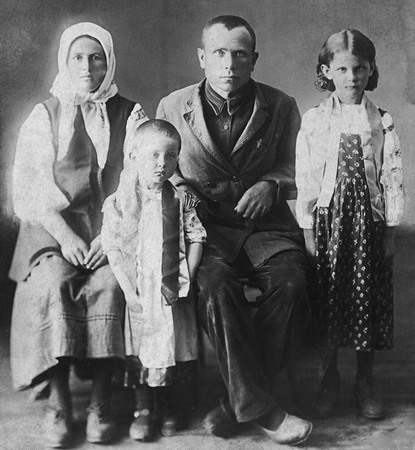Portrait of village of the 1920—1940s
Unknown author, Panas Yarmolenko






Panas Yarmolenko. Pavel Petrenko’s family. 1941. Property of Ivan Gonchar Museum
Panas Yarmolenko. Portrait of Grigoriy Yurchenko. 1940-ies. Lidia Lykhach collection
Panas Yarmolenko. Portrait of Yemelian Cherednichenko’s Father-in-Law. 1931. Property of Ivan Gonchar Museum
Unknown author. Yemelian Cherednichenko’s family. Sitting: Yemelian and his wife. Standing: their daughter Natalia with her husband and daughter Nadya. 1930-ies. Property of Ivan Gonchar Museum
Unknown author. Kuzma Oliferenko with family. Late 1910s. Lidia Lykhach collection
Unknown author. Panas Yarmolenko (left) before army conscription. 1910-ies. Lidia Lykhach collection
Moscow, 25.03.2009—10.05.2009
exhibition is over
WINZAVOD CENTRE FOR CONTEMPORARY ART
4th Syromyatnicheskiy Lane, 1, bld. 6
General Information:
+7 (495) 917-46-46
Share with friends
Proun Gallery
Collection Museum Ivan Gonchar, Museum of national architecture and way of life of Ukraine, Rodovid Galley, private collections
Supprted by Konstantin Grigorishin
For the press
Panas Yarmolenko was born to a large family of farmers in 1886 in the village of Malaya Karatul near Pereyaslavl, Ukraine. Little is known about his education as an artist. According to some sources, he studied art in Pereyaslavl. During World War I, he conscribed to the Russian army together with his brother Arkhip, and was sent to the frontline to serve as a paramedic. In 1917, Yarmolenko married and relocated with his family to Pereyaslav, where he spent over ten years, working in the local arts club and teaching graphics at school.
The earliest of his known works were created in the late
With Panas Yarmolenko’s death in May 1953, the village family portrait fashion soon faded. From




